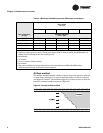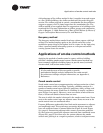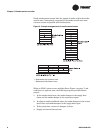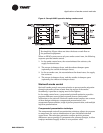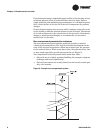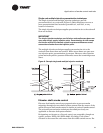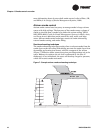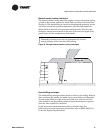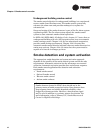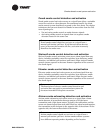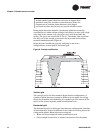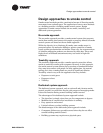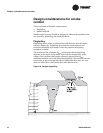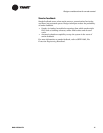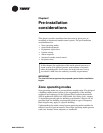
Chapter 1 Smoke control overview
12 BAS-APG001-EN
Underground building smoke control
The smoke control objective for underground buildings is to contain and
remove smoke from the alarm zone. The smoke control system fully
exhausts the alarm zone and provides makeup air to replace the
exhausted air.
Setup and zoning of the smoke detectors is part of the fire alarm system
engineering effort. The fire alarm system signals the smoke control
system to start automatic smoke control operations.
In NFPA 101 (NFPA 2003, Life Safety Code), chapter 11.7 states that an
underground building with over 100 occupants must have an automatic
smoke venting system. Chapter 14.3, for new educational occupancies,
provides smoke zoning requirements. Chapter 12.4.3.3 states that
automatic smoke control must be initiated when two smoke detectors in a
smoke zone activate. Chapter 12.4.3.3 states that the system must be
capable of at least 6 air changes per hour.
Smoke detection and system activation
The appropriate smoke detection and system activation approach
depends on the specifics of the smoke control system and on the code
requirements. Automatic activation has the advantage over manual
activation. Automatic activation provides fast and accurate response.
Each smoke control application has detection and activation
requirements:
• Zoned smoke control
• Stairwell smoke control
• Elevator smoke control
• Atrium smoke exhaust
Note:
Smoke detectors located in HVAC ducts should not be the
primary means of smoke control activation. Duct detectors have
long response times and exhibit degraded reliability when
clogged by airborne particles. However, a duct detector signal
may be used in addition to a primary means of activation. For
more information, refer to Tamura, G.T., Smoke Movement &
Control in High-Rise Buildings.



